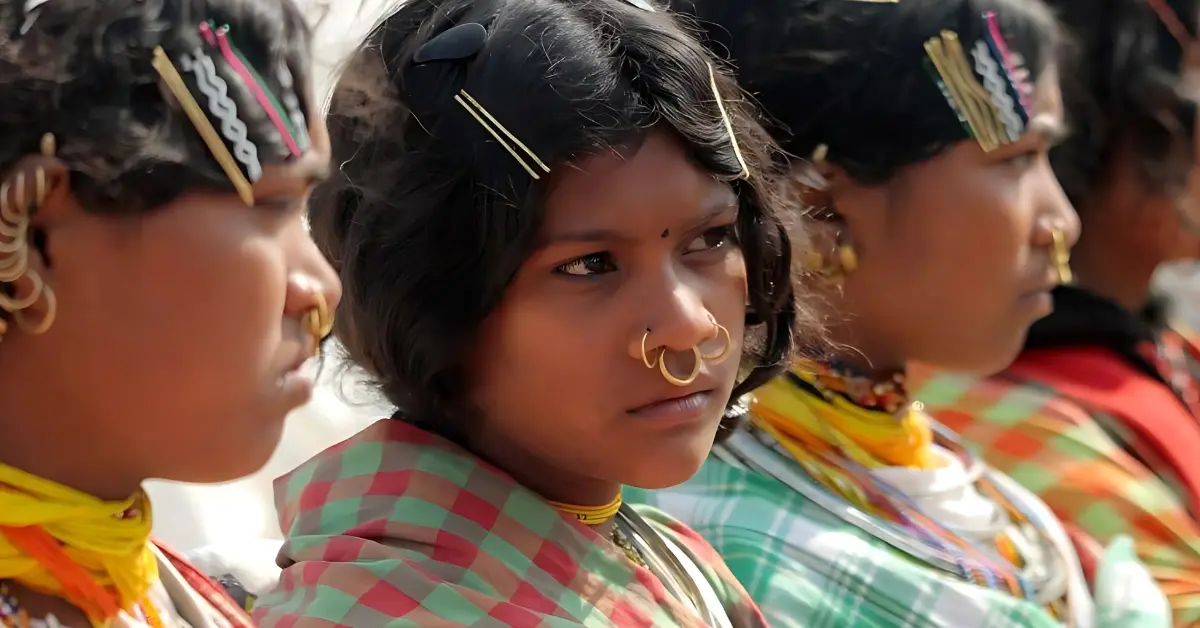Why You Should Study Tribes of India for Exams?
Tribes are groups of people who share the same culture, traditions, and ancestors. They usually live together in small, close communities. India is home to more than 550 tribes, each with its own way of life. These tribes are an important part of our country’s history and culture. Knowing about the major tribes and their types is helpful for students preparing for government exams like SSC, UPSC, Railways, and more, where such questions are often asked.
What Are Scheduled Tribes in India?
As per Schedule 5 of the Indian Constitution, certain communities are identified as Scheduled Tribes (STs) due to their distinct culture, social backwardness, and geographical isolation. These tribes are provided with constitutional safeguards and benefits to ensure their welfare and development.
- Total Recognized STs in India: 705
- ST Population: 8.6% of total population (Census 2011)
- Urban ST Population: Approx. 2.8%
- Lok Sabha Seats Reserved for STs: 47
- Janjatiya Gaurav Divas: Celebrated on 15th November to honor tribal hero Birsa Munda
List of Major Tribes in India
Schedule 5 of the Indian Constitution recognizes tribal communities in India. The tribes are therefore referred to as “Scheduled Tribes” by the Constitution. In India, there are now 705 officially recognized tribes. According to the 2011 Census, Scheduled Tribes make up approximately 8.6% of the total population, with around 2.8% living in urban areas. In the Lok Sabha, 47 seats are reserved for Scheduled Tribes. On November 10, 2021, the Union Cabinet declared November 15 as “Janja/tiya Gaurav Divas” to mark the birth anniversary of tribal freedom fighter Birsa Munda and to honor the contributions of tribal communities to India’s freedom movement.
Bhils Tribe:
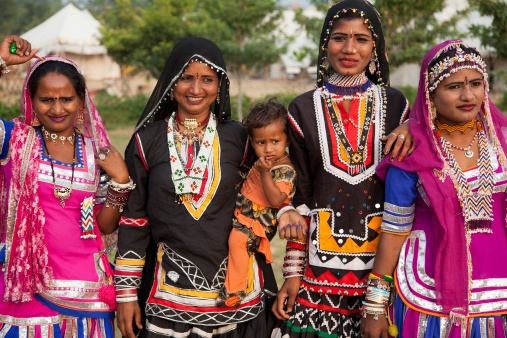
The Bhil are one of the largest tribes in South Asia, making up about 39–40% of the tribal population in Rajasthan. They are mainly found in the districts of Banswara, Dungarpur, and Udaipur, as well as in the Aravalli ranges. The word “Bhil” comes from vil or bil, meaning bow, highlighting their traditional skill as archers. Historically, the Bhils played a key role as warriors, resisting the Mughals, Marathas, and British, and supporting the rulers of Mewar by providing protection and essential resources.
Gonds Tribe:
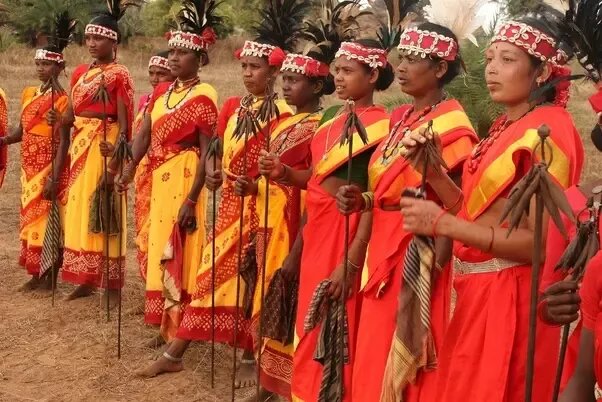
The Chhindwara area of Madhya Pradesh is home to the majority of the courageous Gond Indian tribes, which are located throughout Central India. Telugu, Hindi, Marathi, and many other Dravidian languages are also used proficiently by the Gond tribes. Similar to other tribal tribes in India, the Gonds struggle with both social and economic issues.
The majority of Gands reside in a hamlet led by a Patel or Mahji. These Indian tribal people dress traditionally, with the men donning dhotis and the women donning sarees and blouses called cholis. The jewellery of the Gond tribe are very ornamental. Two millets called Kutki and Kodo are the main foods of the Gond people. Additionally, the Gonds cultivate tobacco for smoking and make alcohol for the Mahua Tree.
Check out Courses for All Govt Exams
Munda Tribe:
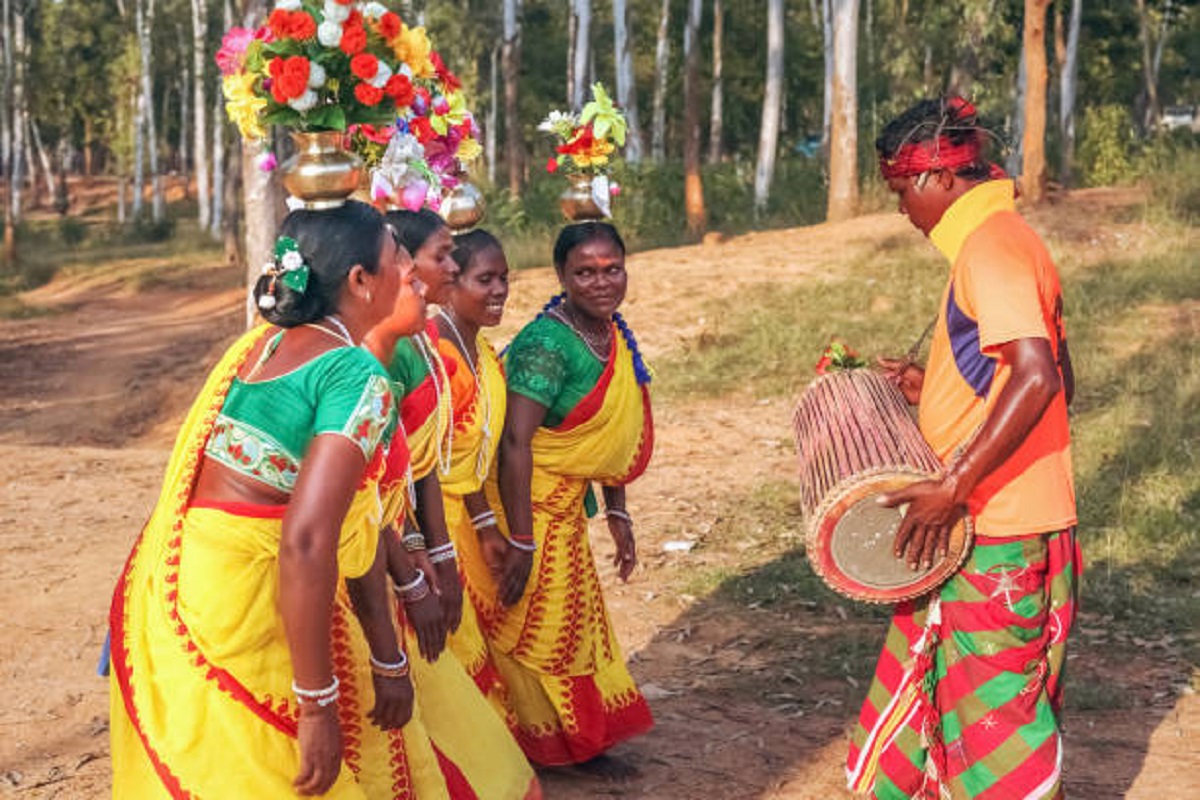
The Munda tribe is one of the oldest and largest tribal communities in South Asia. They mainly live in Jharkhand, with significant populations in Odisha, West Bengal, Chhattisgarh, Bihar, Madhya Pradesh, and even parts of Bangladesh. The Mundas speak Mundari, an Austroasiatic language, and are known for their deep connection to the forest, agriculture, and traditional practices. Birsa Munda, a respected freedom fighter and spiritual leader, led a powerful tribal uprising against British rule in the late 19th century. He is remembered as a national hero, and his contributions are officially recognized by the Indian government. Munda villages are usually led by a village headman known as the Munda, and the tribe is widely respected for its strong cultural identity and resilience.
Santhal Tribes:
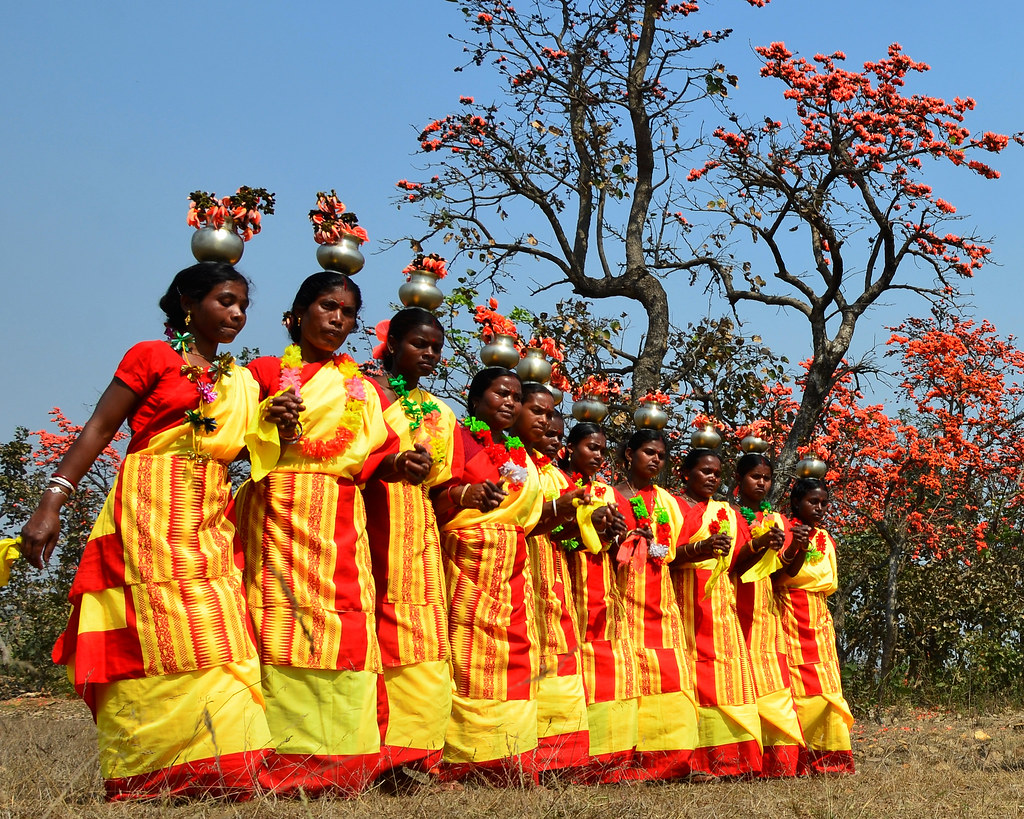
This tribe, which is dispersed across West Bengal, Assam, Jharkhand, and Odisha, is heavily populous in Bihar. The Santhal tribe’s ancestors were reputed to be mighty warriors who had fought the British for independence. The Santhal tribe is thought to be Jharkhand’s biggest tribe.
Santhals like dancing to ethnic beats and listening to music. Residents of the Santhal tribe will always find a way to connect through music and dance, no matter the event, fair, or celebration. The Santali language is spoken by Santhals.
Toto Tribe:
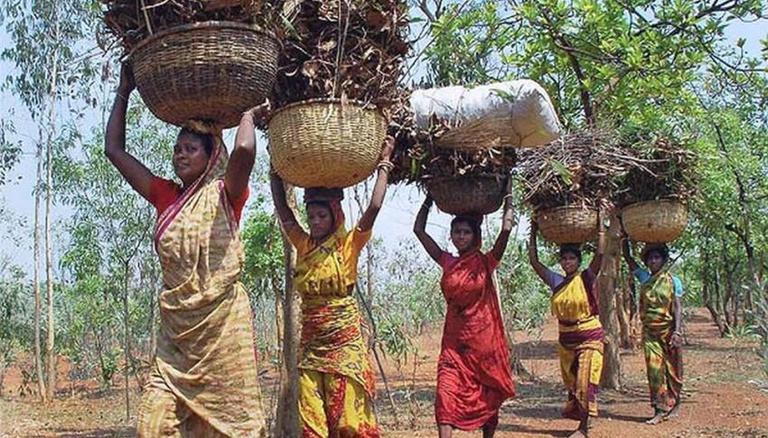
One of India’s remote and endangered tribes, the Toto, is located in West Bengal’s Totopur district. The Toto tribe is still cut off from the outside world. According to reports, there are no more than 1500 members of this tribe, which is why they are referred to as an endogamous community.
The literacy level and employment rates among Toto tribe members are quite poor. The primary livelihoods of these tribal people in India are raising pigs in pens and herding cows. Due to its small numbers and a close call to extinction in the 1950s, this tribe is frequently referred to as “a vanishing tribe” in case studies by anthologists.
Bodo Tribe:
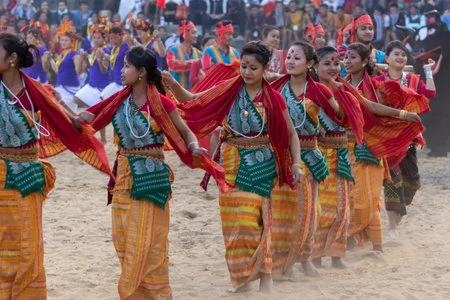
The Bodo tribe, also called Boro, is one of the largest and most well-known tribal communities in Assam, especially in the Udalguri and Kokrajhar districts. You’ll also find smaller Bodo populations in parts of West Bengal, while their presence in Nagaland is minimal. Known for their lively traditions, the Bodos celebrate the Baishagu Festival every spring with music, dancing, and rituals that bring the community together. Bamboo weaving is a big part of their daily life many households are skilled in making beautiful baskets and handloom items. Their food is mostly non-vegetarian, with dishes made from chicken, pork, and fish being local favorites.
Angami Tribe:
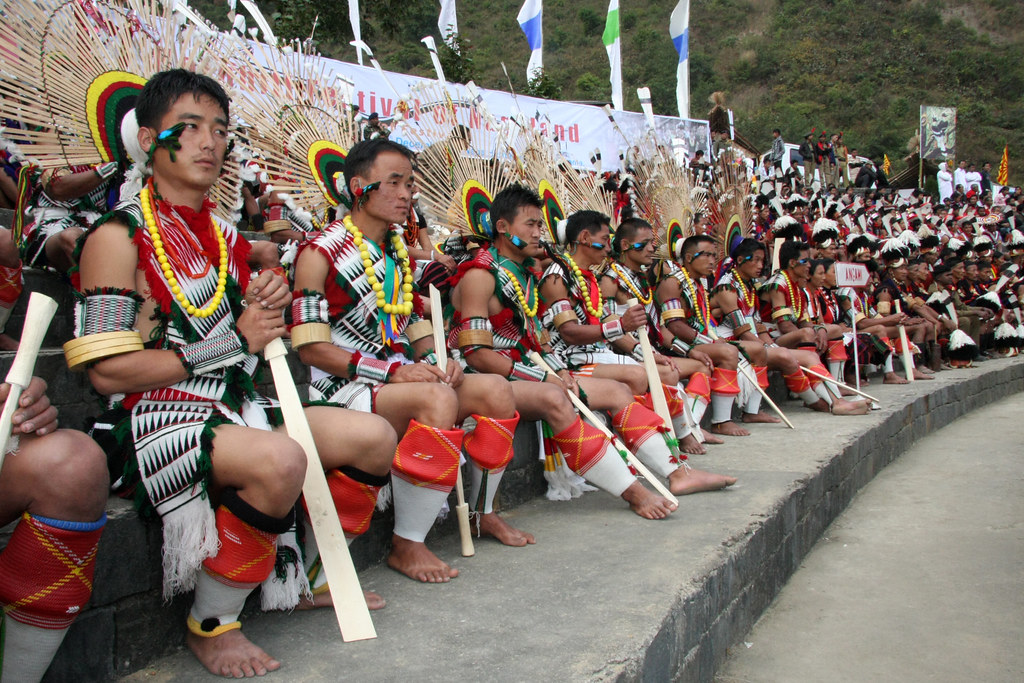
The Hornbill Festival, a well-known celebration held in Angami Naga, draws tourists from abroad and from Nagaland, the most remote region of North East India. One of the main tribes in Nagaland is the Angami Naga, and they are very prevalent in the Kohima district. Their exquisite woodcraft and artwork are also one of their main draws.
The Angami Nagas make furniture out of bamboo and cane, beds, shawls, and sturdy machetes. The Angami tribe’s pork is the greatest, therefore daring carnivore tourists should taste some of their special specialties. In India, it is common to see both the men and women of these tribal groups adorning themselves with black Lohe and other accessories like beads and tiny masks.
Bhutia Tribe:
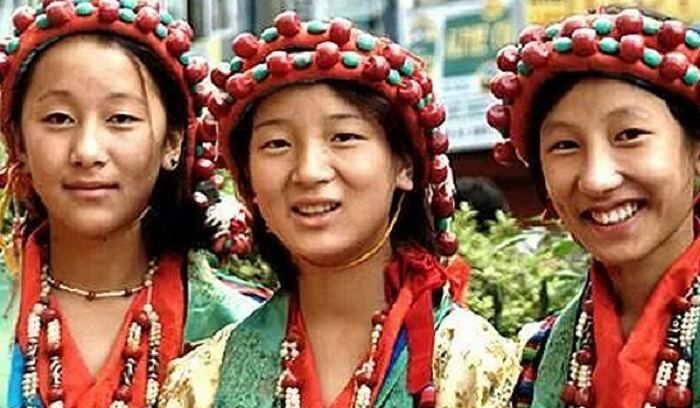
The Bhutia tribe is one of the prominent ethnic communities of Sikkim, with roots tracing back to Tibet. They have significantly influenced the region’s culture, cuisine, art, and traditions. Known for their hospitality and vibrant customs, the Bhutia people are especially famous for traditional dishes like momo (steamed dumplings) and thukpa (noodle soup), often made with beef, pork, or mutton. While the Bhutia community is also found in parts of Bhutan, they are not the majority population there. In Sikkim, however, they are among the major communities. Festivals like Losar (Tibetan New Year) and Loosong are celebrated with much enthusiasm, showcasing their deep cultural heritage and spiritual beliefs.
Khasi Tribe:
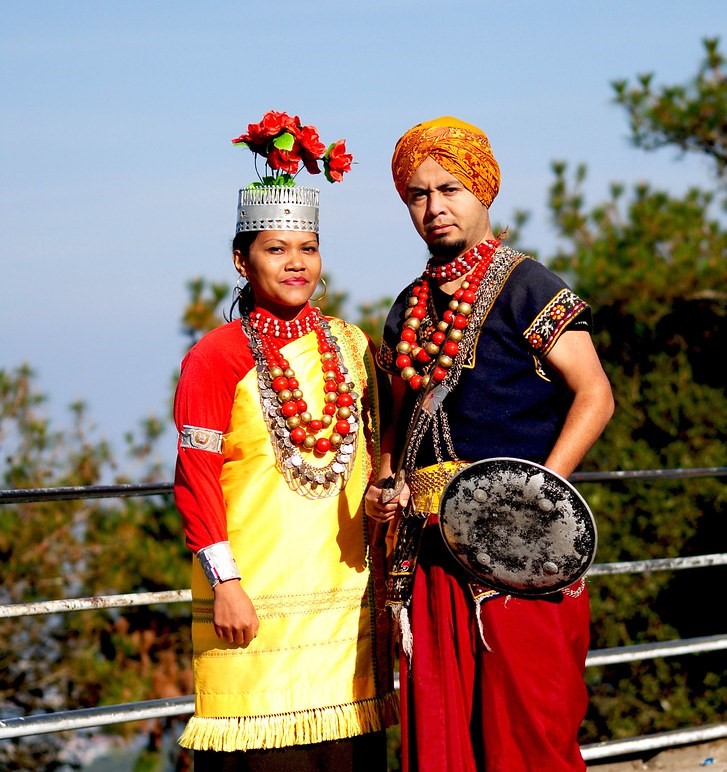
The Khasi tribe is one of the major indigenous communities of Meghalaya, primarily inhabiting the Khasi Hills region. Known for their matrilineal society, where lineage and inheritance pass through the mother’s side, the Khasis have a rich cultural heritage rooted in music, folklore, and traditional crafts. They are especially fond of music and are skilled in making and playing instruments like drums, flutes, and metal cymbals. The Khasi diet is largely non-vegetarian, with rice and meat curries forming the staple meals. Pork is particularly popular, though chicken, fish, and lamb are also commonly consumed. While the tribe is mainly concentrated in Meghalaya, smaller communities are present in parts of Assam, but not widely in Arunachal Pradesh, Manipur, or West Bengal as previously thought. A visit to Khasi territory offers a glimpse into a vibrant and deeply rooted cultural way of life.
Garo Tribe:
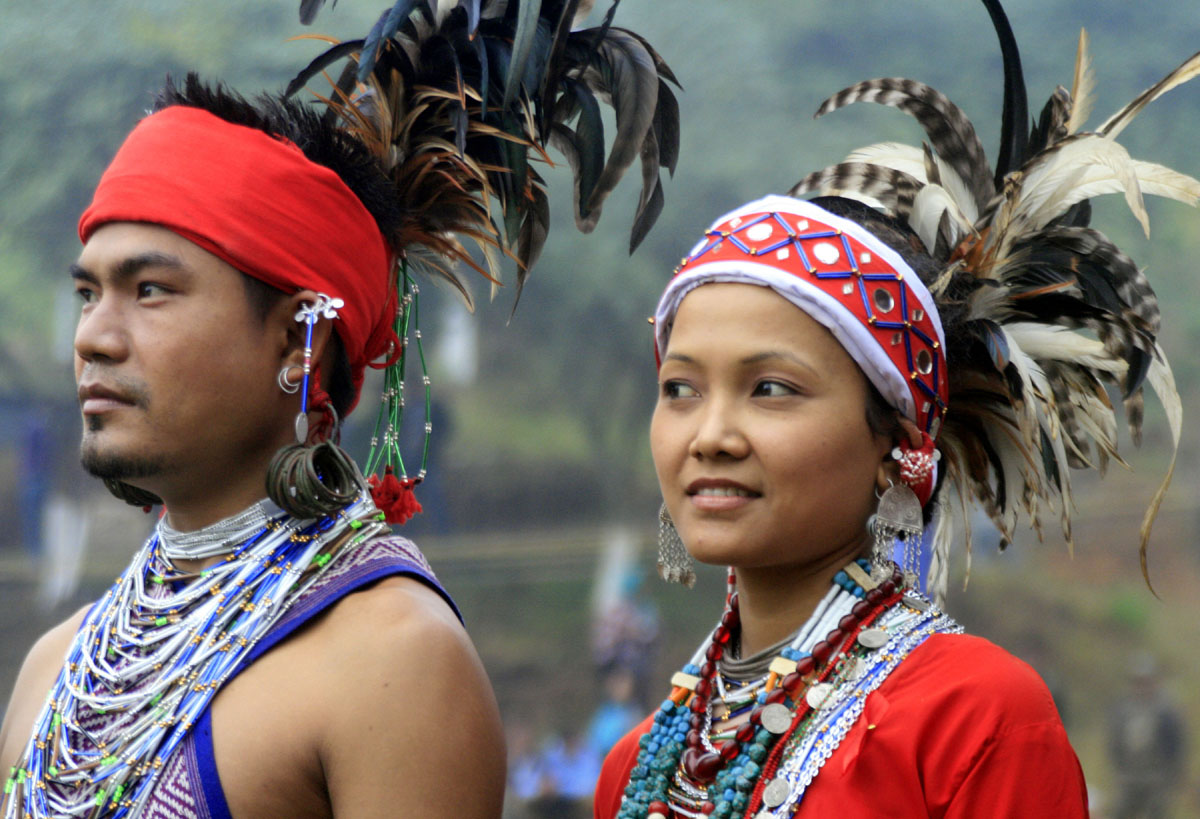
The Garo tribe is one of the major communities in Meghalaya, known for following a matrilineal system where family lineage and inheritance pass through the mother. Mostly found in the Garo Hills, they also live in some parts of Assam, West Bengal, and Bangladesh. While their way of life stands out, it’s worth noting that they aren’t the only matrilineal society in the world. Garo homes and architecture reflect a deep bond with nature. Their traditional houses, like the Nokmong (family home), Nokpante (bachelor dormitory), and Jamadaal (granary), are made from bamboo and wood and play an important role in community life.
- Traditional Clothing: Garo men wear feathered turbans, and women often adorn themselves with beaded jewellery and colorful attire.
- Celebrations: The Wangala festival is one of their biggest events, celebrating the harvest with music, drums, and traditional dance.
- Daily Life: Most Garos depend on farming and forest-based activities, and their social customs emphasize strong family and community ties.
Important Tribes of India:
India is known for its rich cultural diversity, and a big part of this comes from its tribal communities. Across different states and Union Territories, there are hundreds of tribes, each with its own unique traditions, languages, and ways of life. These communities are officially recognized as Scheduled Tribes under Schedule 5 of the Indian Constitution. In the list below, you’ll find the major tribes from each state, important for both general knowledge and competitive exam preparation.
List of Major Tribes in India – State-wise
Explore the major tribes found across different Indian states, along with their names and regions. This list is useful for exam prep and general awareness.
| State | Major Tribes |
| Andhra Pradesh | Chenchu, Savara, Yerukula, Kondareddis, Jatapu, Koya, Gadaba, Valmiki, Kolam, Konda, Lambadi |
| Assam | Bodo (Boro), Miri (Mishing), Rabha, Karbi, Dimasa, Deori, Sonowal Kachari, Tiwa |
| Arunachal Pradesh | Adi, Apatani, Nyishi, Monpa, Tagin, Wancho, Mishmi, Sherdukpen, Nocte, Singpho |
| Bihar | Santhal, Oraon, Munda, Birhor, Ho, Kharwar, Baiga, Chero, Asur |
| Chhattisgarh | Gond, Baiga, Halba, Bhatra, Kamar, Korwa, Binjhwar, Bhunjia |
| Goa | Gowda, Kunbi, Velip, Dhangar |
| Gujarat | Bhil, Rathwa, Naikda, Chaudhari, Gamits, Dhodia, Dublas, Halpati, Kotwalia |
| Jammu & Kashmir | Gujjar, Bakarwal, Balti, Changpa, Gaddi, Sippi |
| Jharkhand | Santhal, Munda, Ho, Oraon, Birhor, Asur, Kharia, Bhumij, Mal Paharia |
| Himachal Pradesh | Gaddi, Gujjar, Lahaula, Pangwala, Bhotia |
| Karnataka | Soliga, Yerava, Koraga, Iruliga, Jenu Kuruba |
| Kerala | Paniyan, Kurichiyan, Kattunaikan, Irula, Adiyan, Kanikkar, Kurumans |
| Maharashtra | Bhil, Gond, Katkari, Warli, Kolam, Korku, Baiga, Thakur |
| Madhya Pradesh | Bhil, Gond, Baiga, Saharia, Korku, Kol, Bharia, Bhilala |
| Manipur | Naga (Tangkhul, Mao, Maram), Kuki, Meitei (Scheduled Tribe only in Hill areas), Paite, Hmar |
| Mizoram | Lushai (Mizo), Chakma, Hmar, Lai, Mara, Paite |
| Meghalaya | Khasi, Garo, Jaintia |
| Nagaland | Angami, Ao, Lotha, Sema, Konyak, Chakhesang, Phom, Rengma, Zeliang |
| Odisha | Santhal, Munda, Gond, Bonda, Juang, Dongria Kondh, Saora, Kharia, Paroja |
| Rajasthan | Bhil, Meena, Garasia, Damor, Saharia, Kathodi |
| Sikkim | Bhutia, Lepcha, Limboo, Tamang |
| Tamil Nadu | Todas, Kotas, Irular, Kurumbas, Paniyan, Kattunayakan, Kanikar |
| Tripura | Tripuri, Reang, Chakma, Jamatia, Halam, Uchoi |
| Telangana | Chenchu, Gond, Koya, Lambada, Kolam |
| Uttarakhand | Tharu, Bhotia, Jaunsari, Raji, Buksa |
| Uttar Pradesh | Tharu, Gond, Baiga, Chero, Bhotia, Kol |
| West Bengal | Santhal, Oraon, Munda, Bhumij, Lodha, Rabha, Mahali, Kora |
- As per latest official data, India has 705 Scheduled Tribes recognized across different states and union territories.
- Scheduled Tribes account for 8.6% of the total population (Census 2011).
- Urban population among Scheduled Tribes is around 2.8%.
- There are 47 Lok Sabha seats reserved for Scheduled Tribes.
- Janjatiya Gaurav Divas is celebrated on 15 November, the birth anniversary of Birsa Munda, in recognition of tribal contributions to Indian history and independence.
Types of Tribes in India
In India, tribes are generally classified into two broad types based on two factors – permanent traits and acquired traits. These classifications help in understanding the lifestyle, culture, and social integration of tribal communities.
1. Based on Permanent Traits
This classification is done by looking at long-standing features like:
- Language spoken by the tribe
- Ecological habitat or the region they live in (hills, forests, coastal areas, etc.)
- Religious beliefs and practices
- Cultural characteristics like customs and traditions
2. Based on Acquired Traits
These traits are related to the way of life and interaction with mainstream society. This includes:
- Based on Livelihood:
Tribes are grouped based on the kind of work they do. Examples include:- Hunters and food gatherers
- Fishermen
- Shifting cultivators
- Plantation and industrial workers
- Agricultural peasants
- Based on Incorporation into Hindu Society:
This refers to how much a tribe has blended with the larger Hindu social system in areas like:- Politics and governance
- Education and public life
- Religious and cultural assimilation.
Important Tribes of India- FAQs
Ans. Tribal communities are frequently asked about in SSC, UPSC, Railways, and other government exams due to their historical, cultural, and constitutional significance. Questions are usually factual and scoring.
Ans. As per the latest data, 705 tribes are officially recognized as Scheduled Tribes across India.
Ans. States like Madhya Pradesh, Chhattisgarh, Odisha, Jharkhand, and Rajasthan have some of the largest tribal populations in India.
Ans. You can practice tribe-based MCQs and other important General Awareness topics using Oliveboard’s free mock tests and study material available on our platform.
Ans. The Santhal tribe speaks Santali, which is part of the Austroasiatic language family.
- JAIIB IE and IFS Exam Analysis 2025, 2nd November 2025 Detailed Analysis
- JAIIB RBWM Exam 2025 Analysis 16th November 2025
- JAIIB AFM Exam Analysis 2025, November All Shifts Review
- JAIIB PPB Exam Analysis 2025, November All Shifts Review
- JAIIB Exam Analysis 2025, November Cycle, All Shifts Covered
- AIBEA Clerk Job Hiring 2026- 19,942 Vacancies Expected
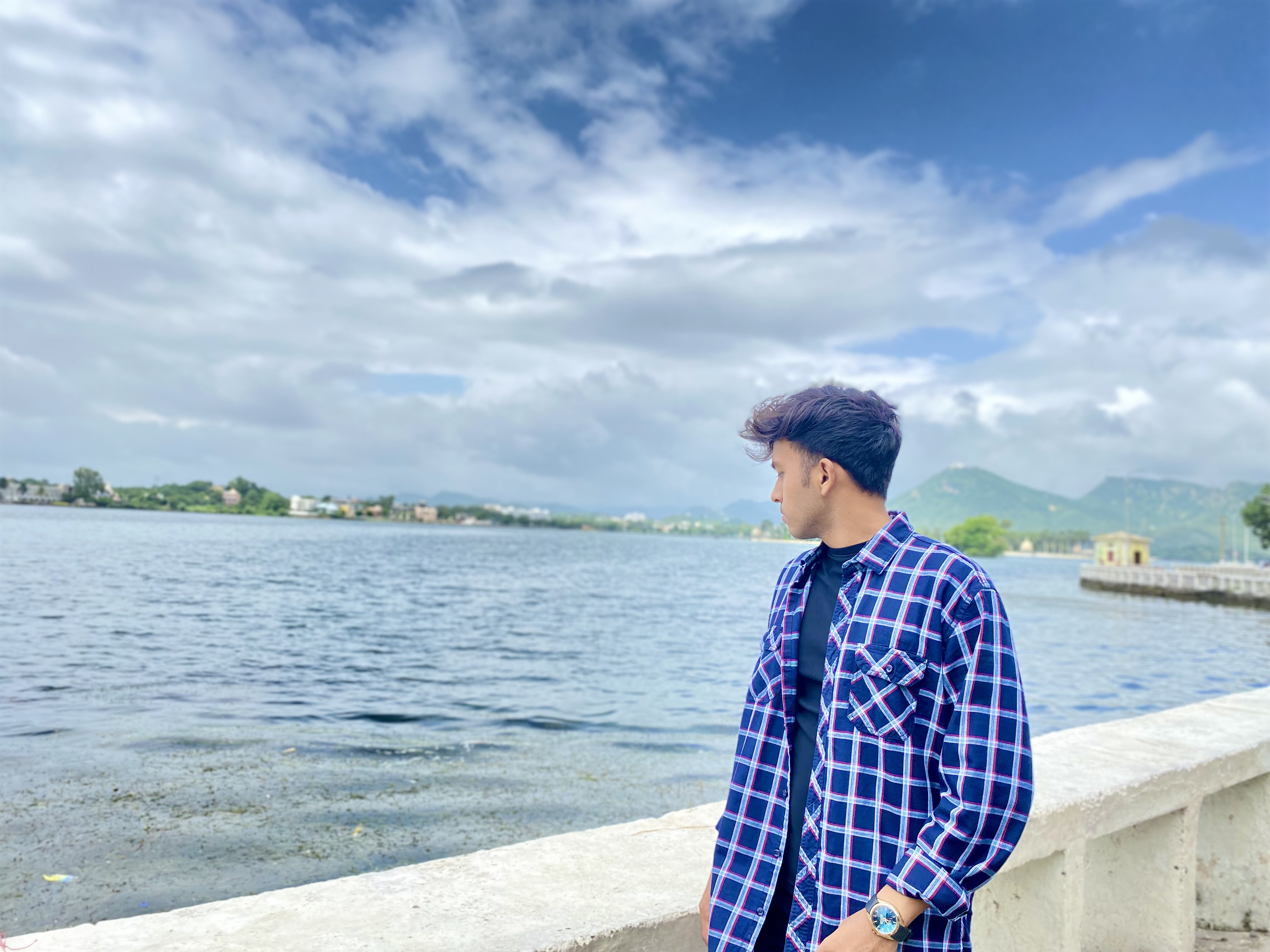
Hello, I’m a content writer working at Oliveboard. I focus on creating blogs, articles, and educational content that’s simple, clear, and saves time for readers. I believe in writing that adds real value without overcomplicating things. I also have strong knowledge of banking and government exams, which helps me create content that is both accurate and easy to understand. With experience and consistency, I aim to make preparation smoother for every learner.
